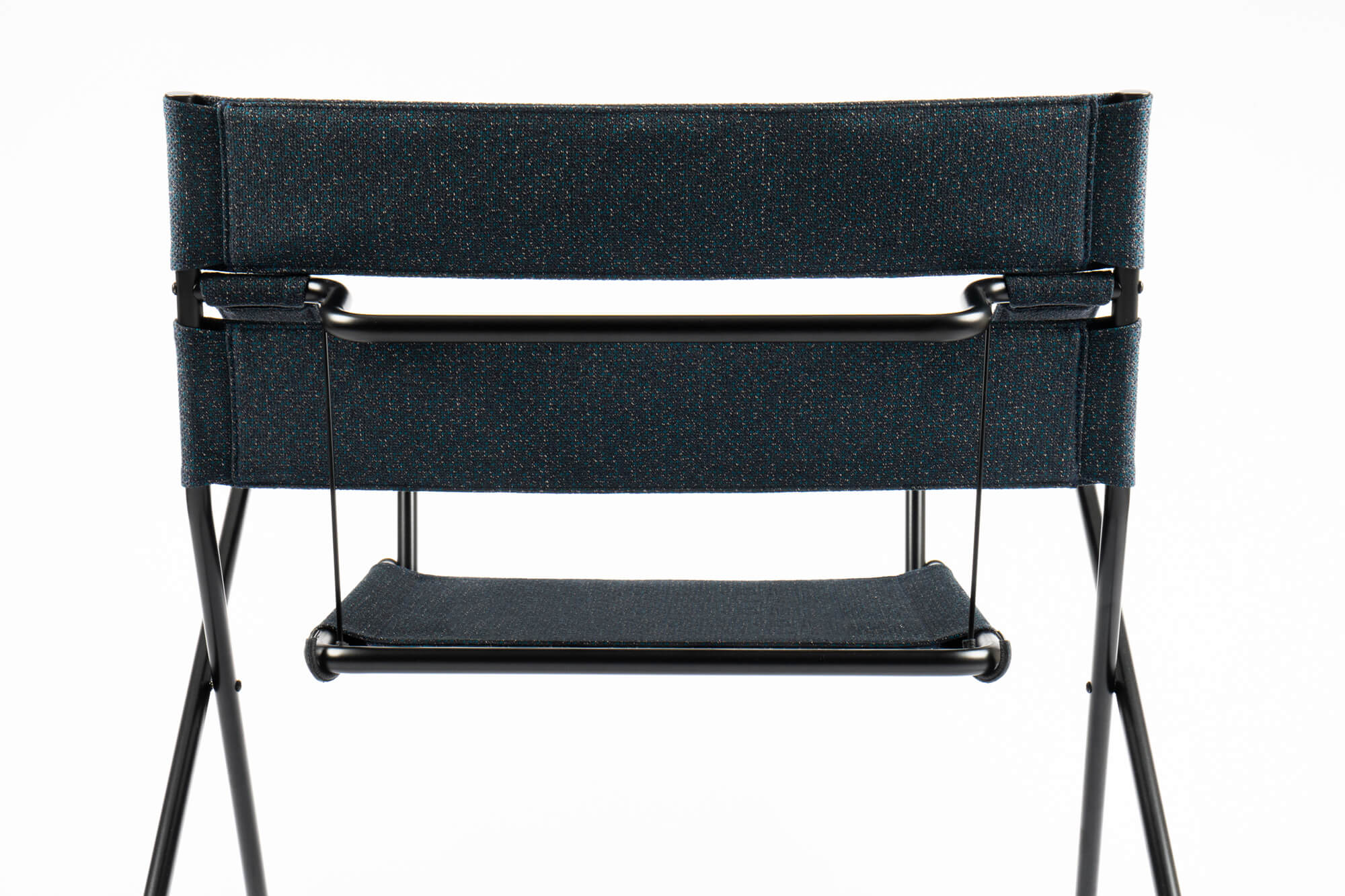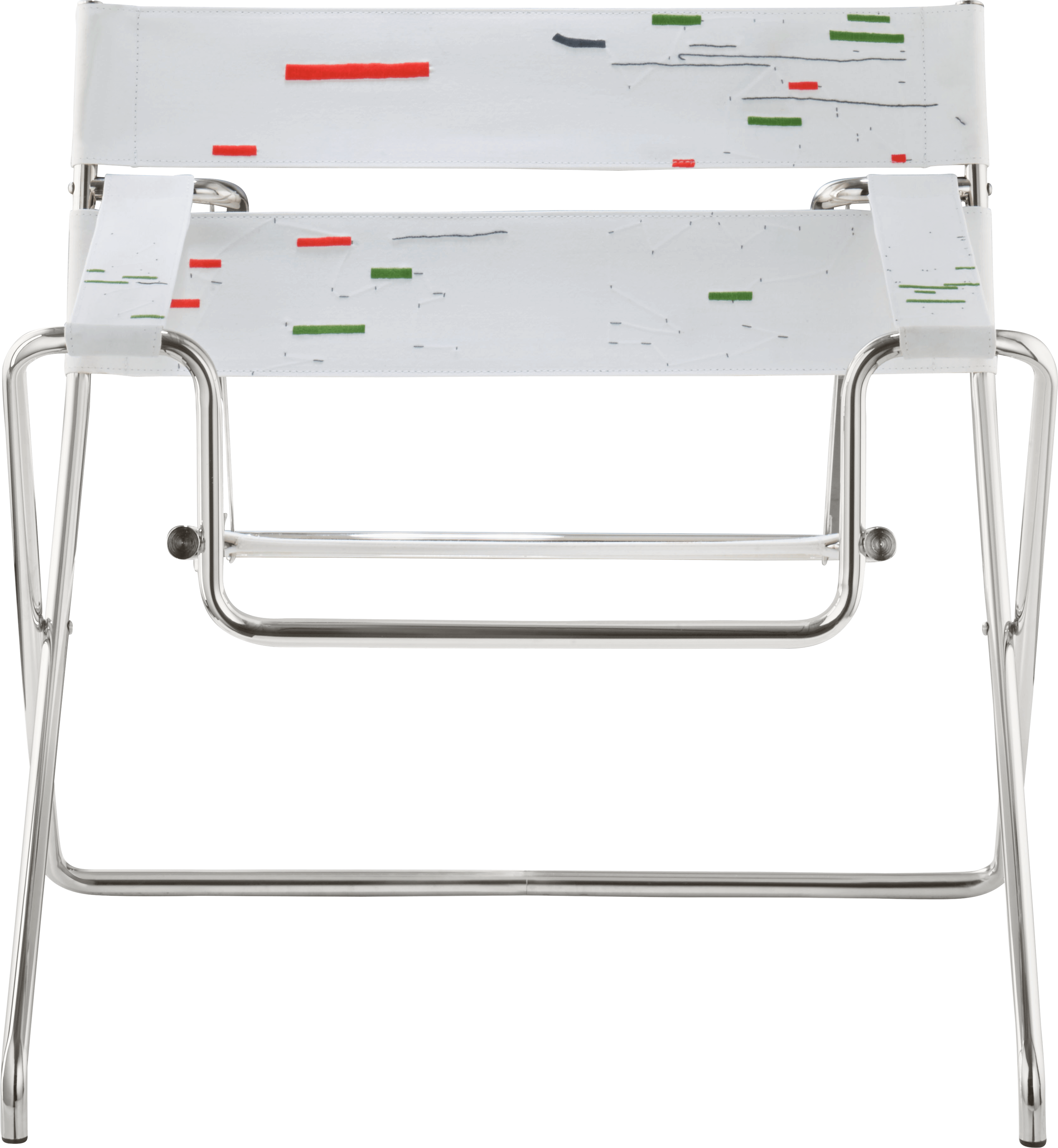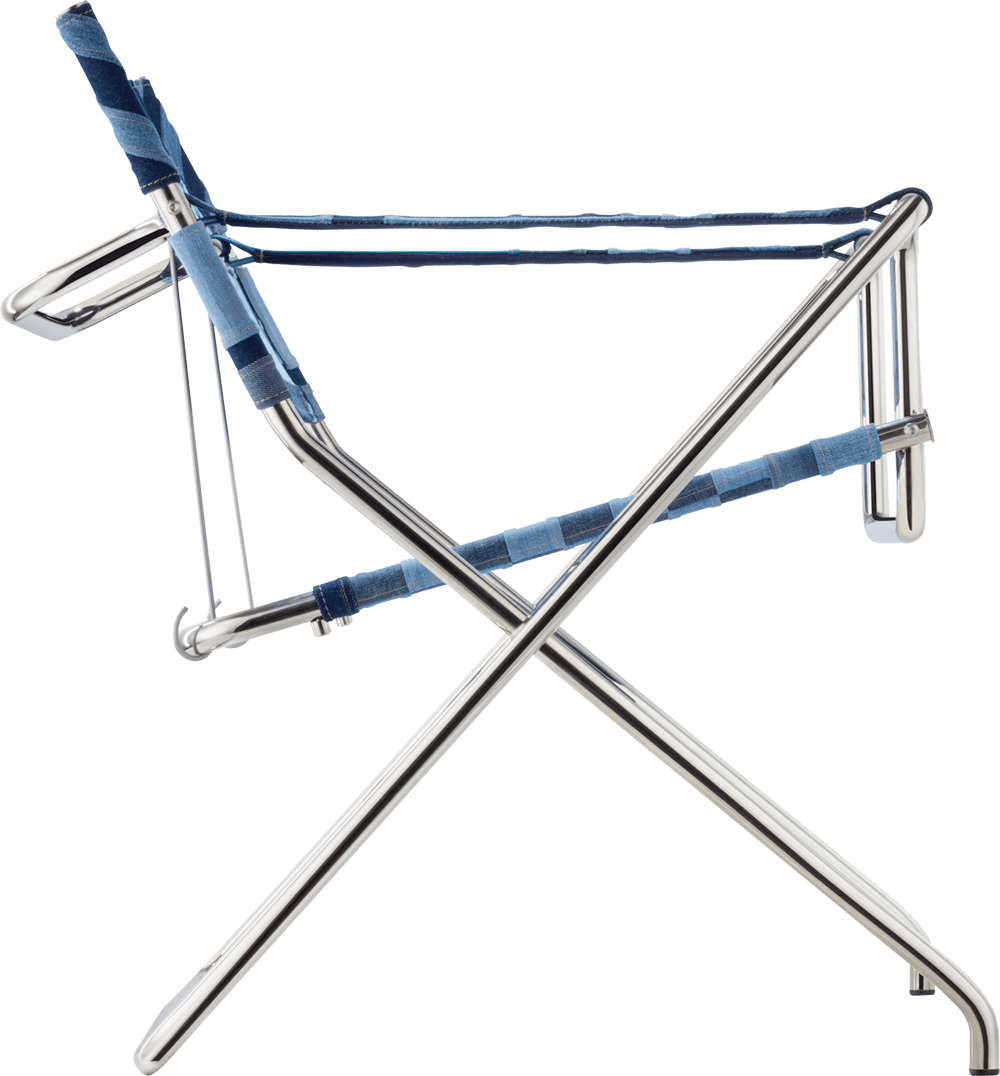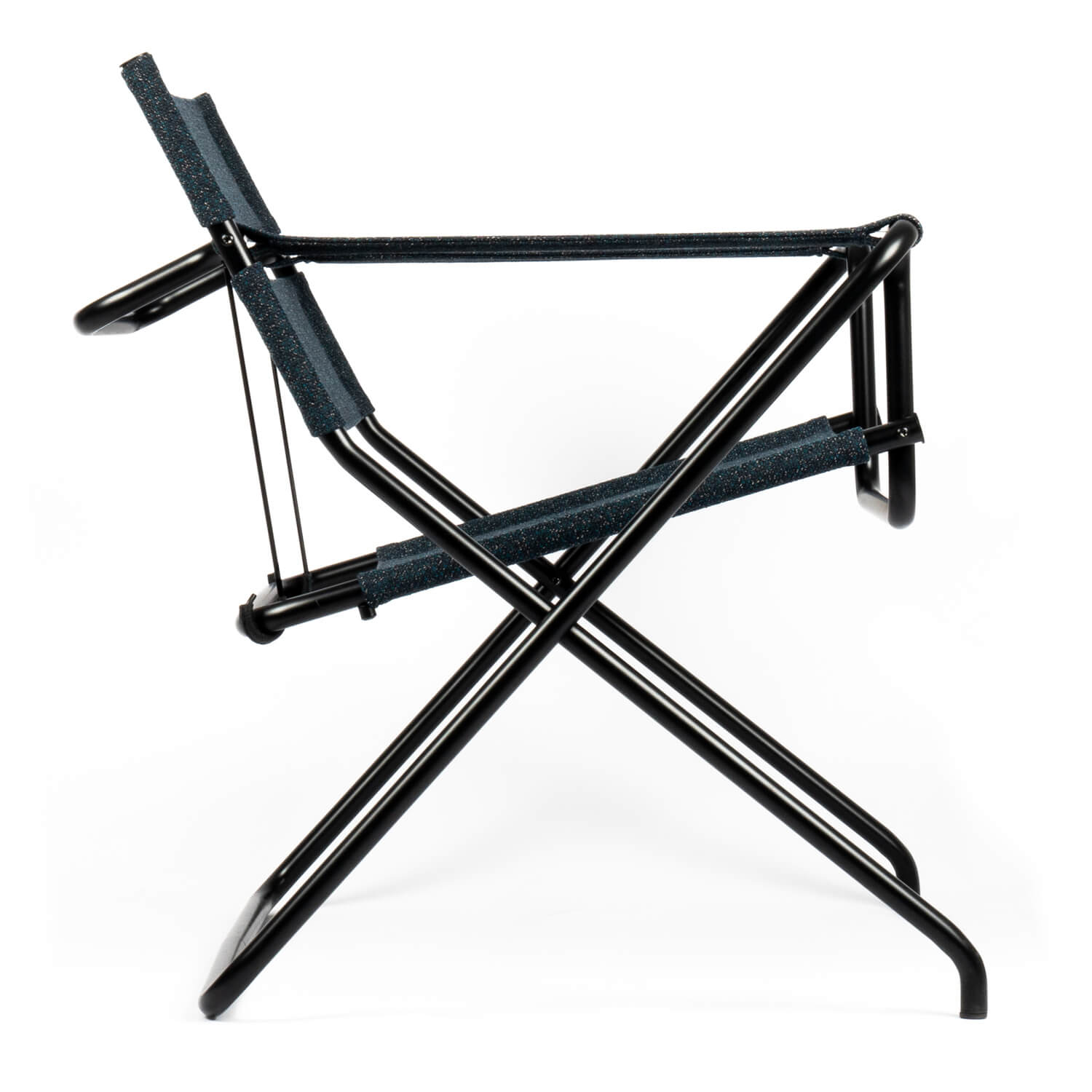
D4
Black edition
The folding tubular steel chair with straps was designed in 1926/27 and advertised in Marcel Breuer’s first tubular steel catalog as “particularly suitable” for boats and sports fields as well as for terraces, summer houses, gardens and garden cafes. This sporty, airy ambience has been inscribed in the design; light and springy, the D4 still appears today. Here, the step into modernity is tangible and draws the eye to the functional design.
The black edition of the D4 folding chair is available to order now. The tubular steel can also be powder coated in other colors on request.
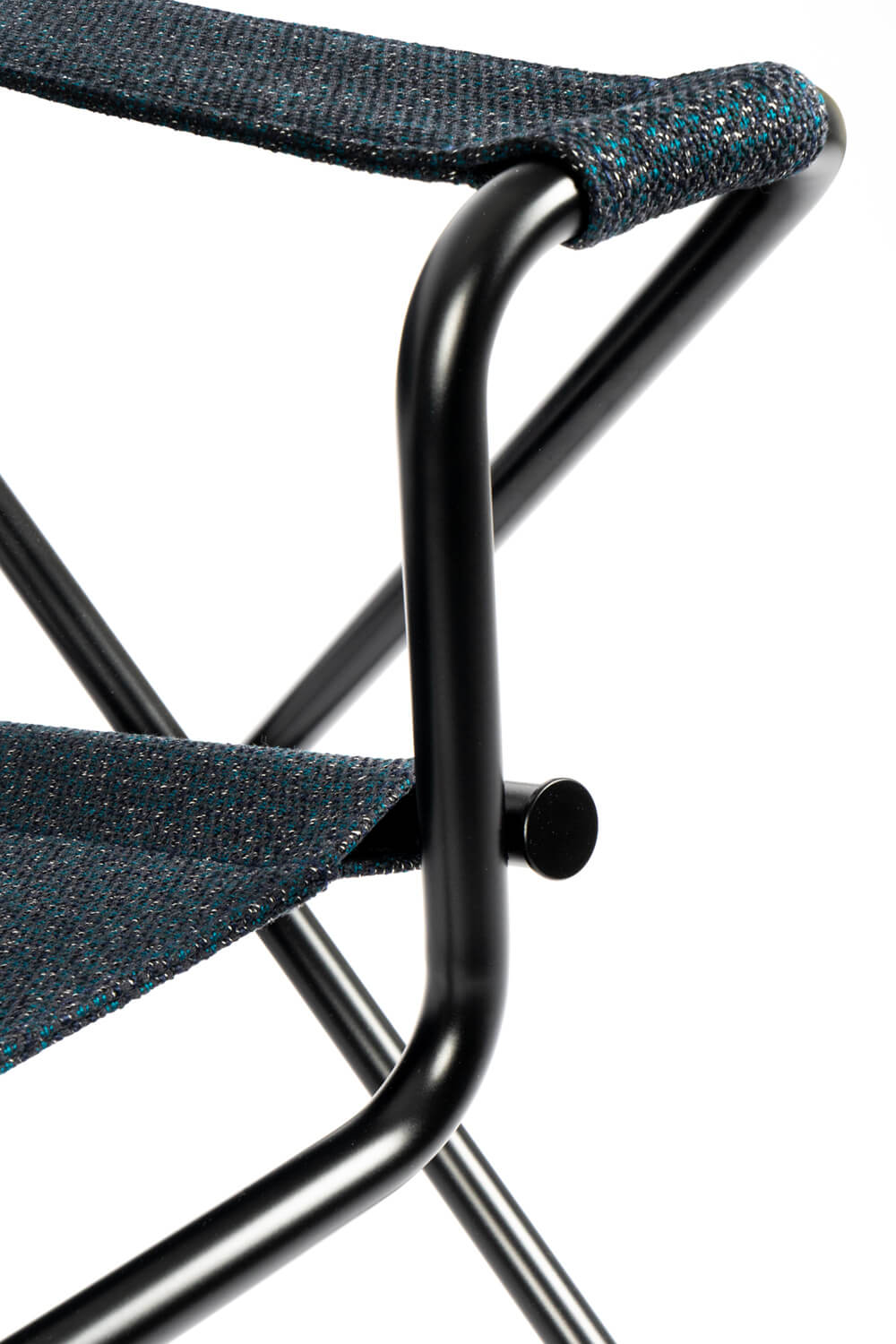
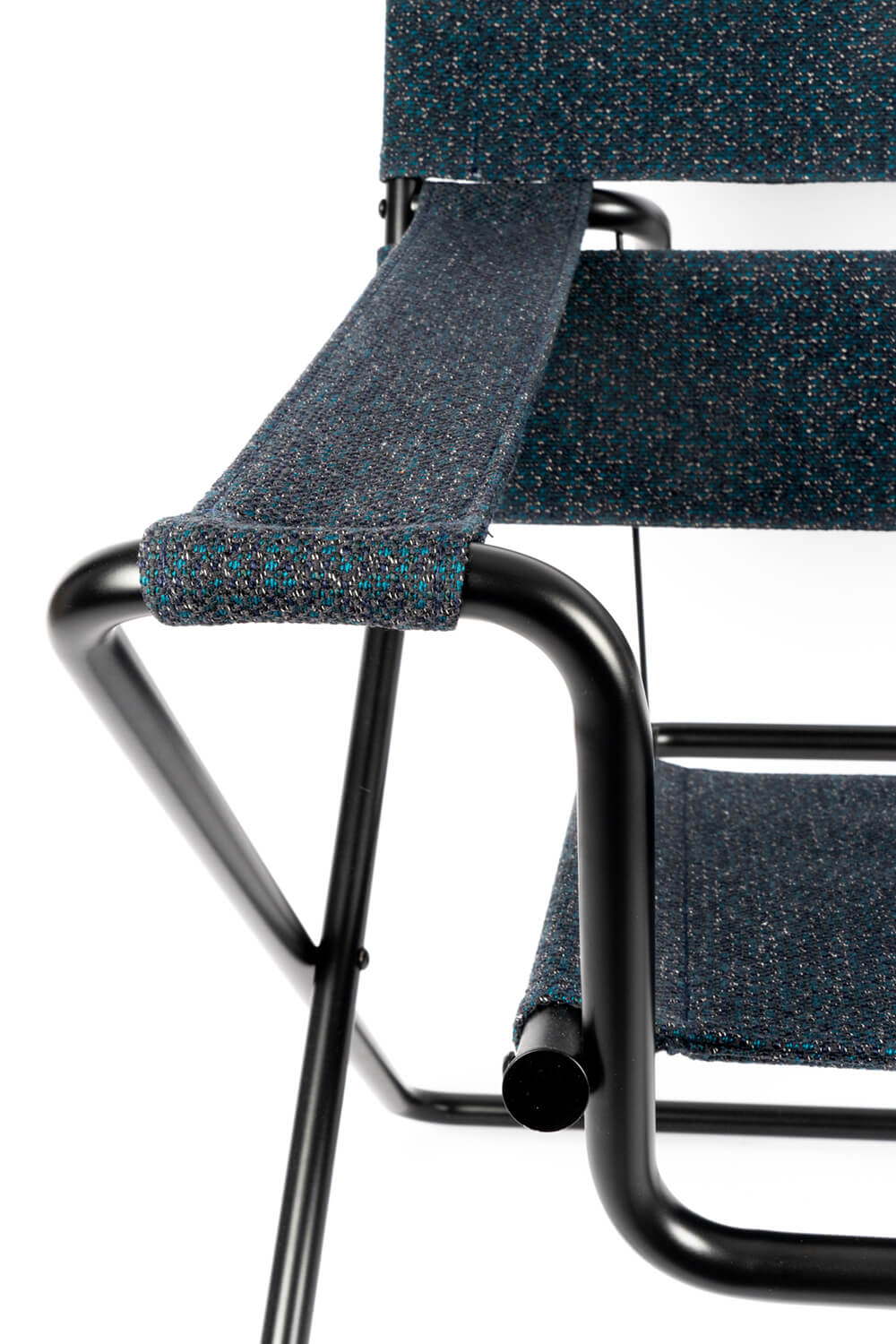

D4: True to the original and with license.
How can you recognize the original Bauhaus reeditions from Tecta? The Bauhaus Archive in Berlin only approves true-to-work and licensed reeditions of the original Bauhaus models. These are marked with Oskar Schlemmer’s signet, which he designed for the Weimar State Bauhaus in 1922. Even today, our Bauhaus models are based exactly on the proportions of the originals.
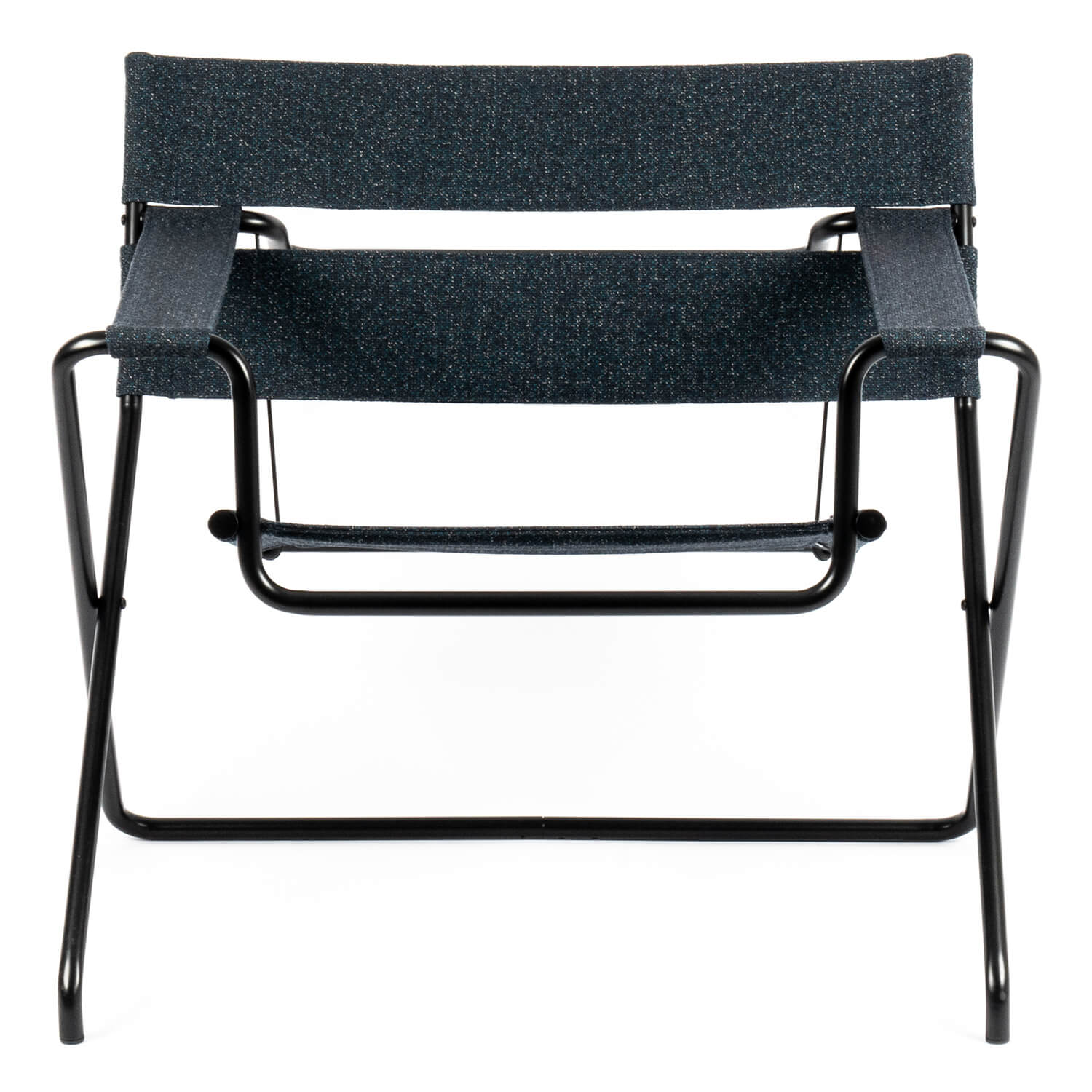
height: 71 cm
width: 78 cm
depth: 61 cm
seat height: 44 cm
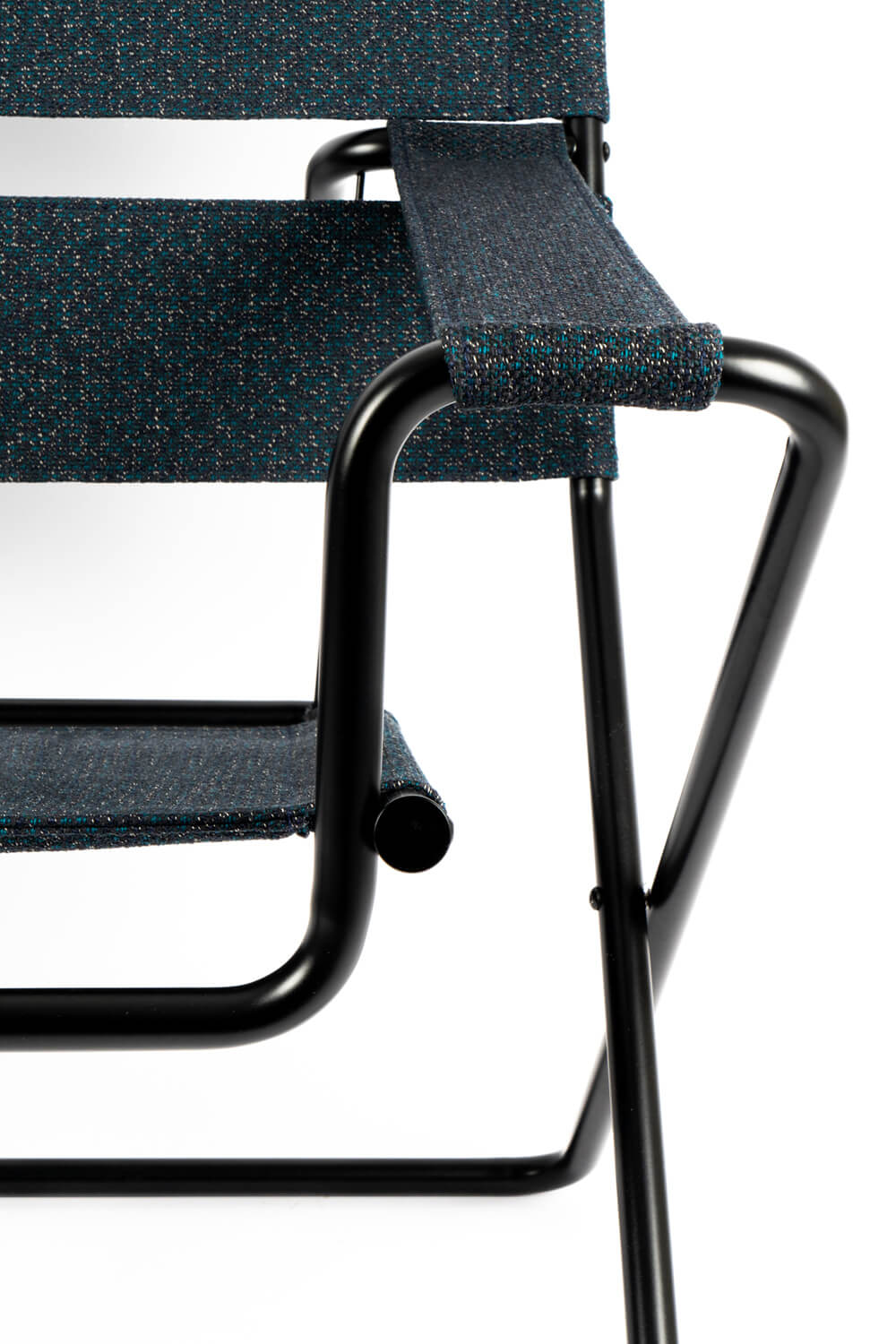
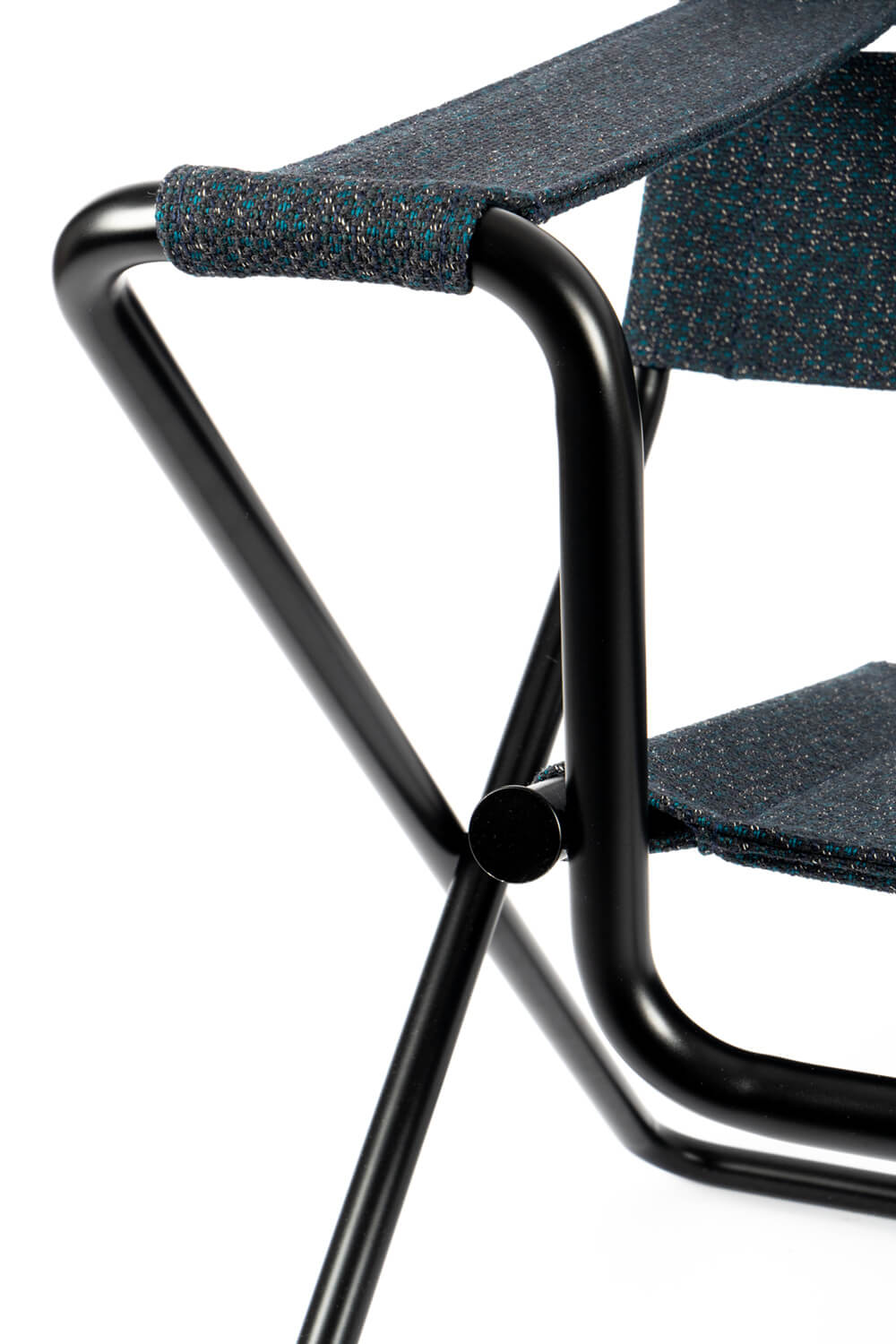

Of course, the first thing we associate with Bauhaus master Marcel Breuer is one material: tubular steel. And one principle: the cantilever chair, which sparked modern furniture design. “Humankind was freed from the tethers of rigid sitting to enjoy the freedom of the floating seat. The cantilever chair was a symbol of its time.” But this does not really do justice to Marcel Lajos (“Lajkó”) Breuer (1902-1981). What he really pursued was research into the essence of objects: what should, what can a modern piece of furniture do today, was the Bauhaus question.
+ read more
- einklappen
In 1925, Breuer became head of the furniture workshop in Dessau as a “junior master”. The year before, he had already postulated his definition of contemporary furniture. Although he attached great importance to details, Breuer favoured the precision of thinking over formal aspects. “There is the perfection of construction and detail, along with and in contrast to simplicity and generosity in form and use,” he wrote in an essay outlining his philosophy.
His role in popularising tubular steel for furniture design may also be due to his being one of the first to realise how dynamic our lives had become, demanding equally light and flexible solutions. The cycling enthusiast also embraced the latest trends in architecture, industry and design for a new zeitgeist. “I have specifically chosen metal for these pieces of furniture to achieve the characteristics of modern spatial elements,” explained Breuer. “The heavy upholstery of a comfortable armchair has been replaced by tightly stretched fabric surfaces and a few lightweight springy cylindrical brackets.”
In addition, the construction was no longer hidden, but flashing chrome became a visible part of the design. Cantilever chairs were bolted, not welded, functions stacked and colour-coded. The result was a dematerialised floating appearance and a new spirit of space. The cantilever chair meant a liberation from the thousand-year-old model of rigid throne-like sitting. It was the implementation of the functional, kinetic and constructive counter-principle. This kinetic line, the dawn of the modern era, can still be traced to the young Bauhaus designers today.
